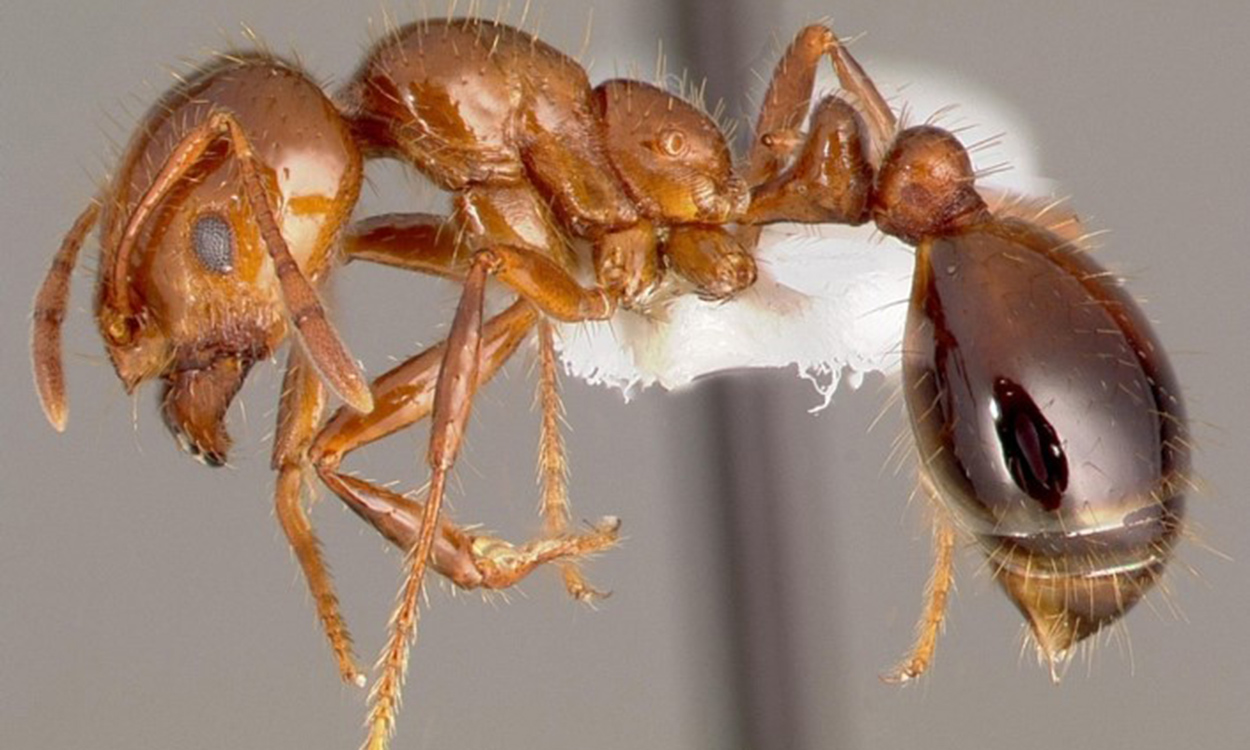Fire Ant Problems Increase in Mountains, Including Higher Elevations of the Region

Move over murder hornets. Fire ants, those vicious insects with a painful sting and destructive ways, are becoming more pervasive in the mountains, according to research from the Highlands Biological Station of Western Carolina University.
A recently published report shows an acclimation of fire ants to high elevations in the Southern Appalachians, something that many biologists had long believed could not happen.

James Costa
"This has some important conservation implications, especially as the forests here are increasingly fragmented, opening the door to more and more fire ant colonization," said Jim Costa, professor of evolutionary biology at WCU and executive director of Highlands Biological Station, a 23-acre facility known for its research labs and resources for teaching and learning.
"Although they will spread and be pests in urban, suburban and agricultural environments in our region, the biggest potential ecological impacts of the ants persisting at higher elevations will be in Great Smoky Mountains National Park and especially the national forests – along U.S. Forest Service roads, logged areas and power line cuts that will give the ants a toehold where there is disturbed soil and sun, from which they can wreak havoc in the adjacent forest," he said.
 Amanda Lytle
Amanda Lytle
The lead author on the report was Amanda Lytle, who earned her master's degree in biology at WCU and is a research technician in the Department of Entomology and Plant Pathology at North Carolina State University, along with Costa and Robert Warren, who received his master's degree in biology from WCU. Warren is now on the faculty of Buffalo State University in New York
An invasive species accidentally introduced from South America to Mobile, Alabama, in the early 1930s, fire ants are extremely efficient predators, feeding on or displacing native insects, which serve as a food source for native songbirds and are wildflower pollinators. Fire ants can cause large-scale agriculture damage, as well.
Grabbing headlines, though, is the fact that fire ants inflict extremely painful stings, and enough stings can cause severe allergic reactions requiring hospitalization. Living in colonies, the aggressive insect can attack and kill small animals.
 Robert Warren
Robert Warren
"The ants are adapting to the winters here — colonies were found to persist at elevations over 4,000 feet, and our study showed in laboratory tests that their ability to withstand cold was directly related to where they were collected from, with higher elevation ants proving to be far more cold hardy than their lowland cousins," Costa said. "So, they are here to stay. Their ability to adapt is probably going to be aided by climate change as it gets warmer at higher elevations, but our study results suggest that even in a non-warming scenario they would continue to adapt and spread here."
The research was published as an article in PLOS ONE journal, a peer-reviewed multidisciplinary e-journal covering more than 200 subject areas across science, engineering, medicine and the related social sciences and humanities, and available for free download.
Established in 1927, the Highlands Biological Station includes the Highlands Nature Center, the William Coker Laboratories and the Highlands Botanical Garden, along with a series of public-accessible trails and boardwalks. On the grounds are a 7-acre lake and nearly 500 species of mosses, ferns, wildflowers, shrubs and trees in natural forest, wetlands and old-growth settings. Learn more at highlandsbiological.org.

